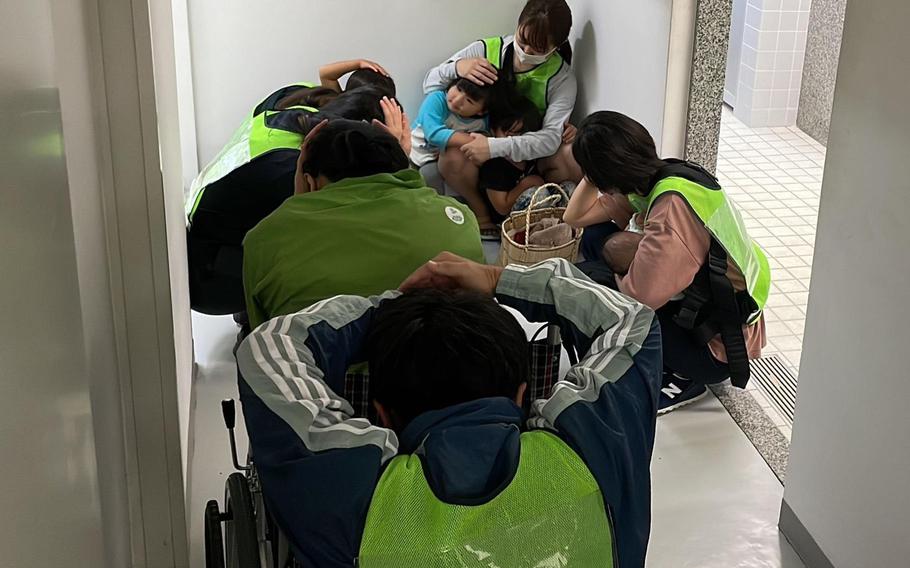Asia-Pacific
Exercise trims time to move Japanese islanders from harm’s way
Stars and Stripes March 27, 2023

People simulate taking shelter during an evacuation drill in Yonaguni, Okinawa, Japan, on Nov. 30, 2022. (Office of the Cabinet Secretary)
CAMP FOSTER, Okinawa – A tabletop, mass-evacuation exercise recently by Japanese emergency planners managed to halve the time required to move 120,000 people in the event of an attack on the nation’s scattered southern islands.
Planners with the Japanese government, including the Self-Defense Forces and coast guard, Okinawa prefecture and its cities and towns took part in the 3 ½-hour exercise March 17 in Naha, the prefectural capital, a spokesman for Okinawa’s Disaster Prevention and Crisis Management Division told Stars and Stripes by phone Monday.
The group examined the logistics of moving most of the residents and visitors in the Sakishima island chain to its larger islands like Ishigaki and Miyako, and finally Kyushu, the southernmost of Japan’s four main islands. The Sakishima chain stretches southwest of Okinawa to within 75 miles of Taiwan and consists of 44 islands.
“Armed enemy attacks or terrorist attacks are emergencies that should not happen, but it is important to enhance readiness to protect people’s lives,” Okinawa Gov. Denny Tamaki said during press conference March 17, according to a video clip on the prefectural website.
The exercise scenario did not specify where the hypothetical attack originated, Tamaki said. He did not participate in the exercise.
However, Japan has announced plans to deploy missile batteries on Ishigaki, Miyako and Okinawa by 2026 to deter China’s growing and increasingly assertive military. Japanese lawmakers in December approved a record defense budget of about $51.4 billion for fiscal year 2023 that emphasizes counterstrike capabilities and strengthens standoff air and missile defense. At the same time, the government plans a series of bomb shelters on the islands.
Initial estimates suggested 13 days were required to evacuate 110,000 residents and 10,000 tourists by ship from remote islands to the Ishigaki and Miyako collection points and then fly them to Kyushu, the crisis management spokesman said. He said the exercise participants, including representatives from Tokyo and Ishigaki city, cut that time in half.
No U.S. military or government officials were involved in the discussions, the spokesman said.
“This is a simple calculation, and it might change depending on the size of the aircraft or the interval between each flight,” he said. “It is very dangerous if we don’t reach a consensus during an emergency.”
Some government officials in Japan are required to speak to the media only on condition of anonymity.
The group, however, did not consider complicating factors, such as night movements, inclement weather or attempts to move infirm people, the spokesman said.
Another drill is planned for January to focus on command and control, as well as the required police, fire and airport staff.